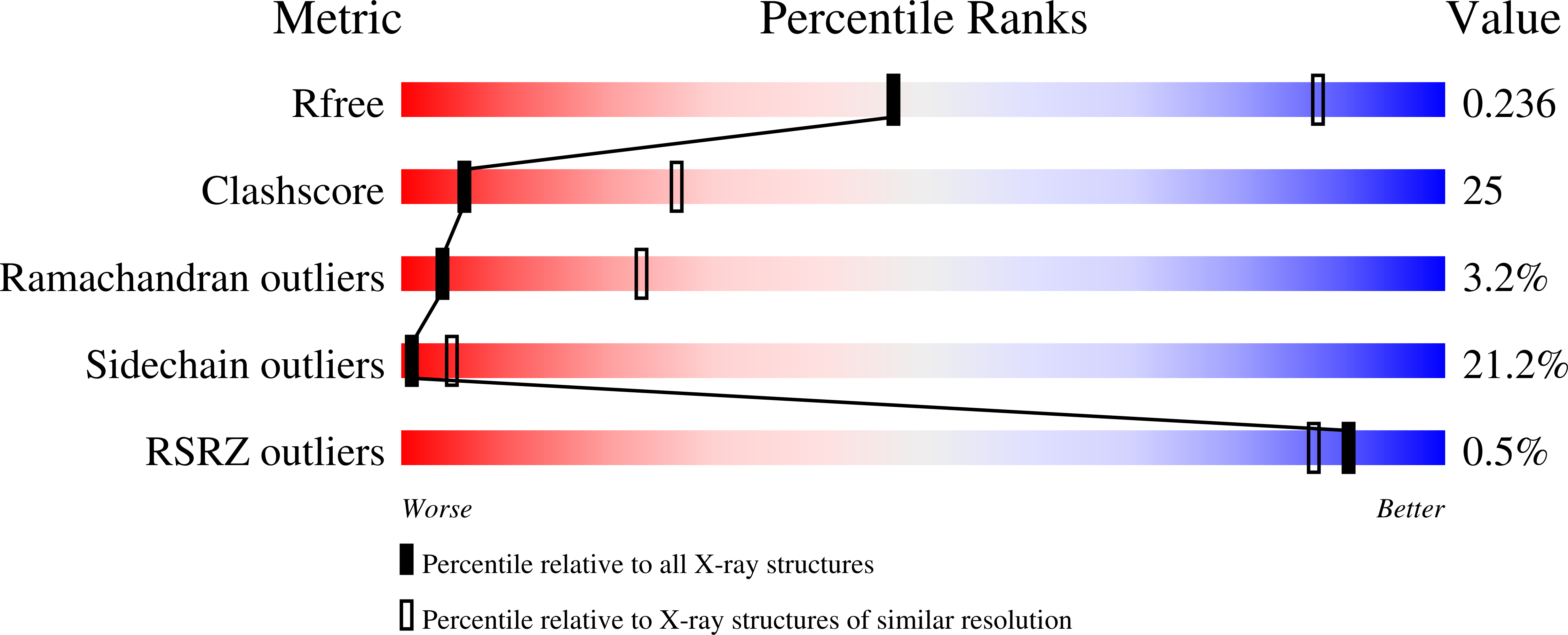Dynamic oligomeric conversions of the cytoplasmic RCK domains mediate MthK potassium channel activity.
Kuo, M.M., Baker, K.A., Wong, L., Choe, S.(2007) Proc Natl Acad Sci U S A 104: 2151-2156
- PubMed: 17287352
- DOI: https://doi.org/10.1073/pnas.0609085104
- Primary Citation of Related Structures:
2OGU - PubMed Abstract:
The crystal structure of the RCK-containing MthK provides a molecular framework for understanding the ligand gating mechanisms of K+ channels. Here we examined the macroscopic currents of MthK in enlarged Escherichia coli membrane by patch clamp and rapid perfusion techniques and showed that the channel undergoes desensitization in seconds after activation by Ca2+ or Cd2+. Additionally, MthK is inactivated by slightly acidic pH only from the cytoplasmic side. Examinations of isolated RCK domain by size-exclusion chromatography, static light scattering, analytical sedimentation, and stopped-flow spectroscopy show that Ca2+ rapidly converts isolated RCK monomers to multimers at alkaline pH. In contrast, the RCK domain at acidic pH remains firmly dimeric regardless of Ca2+ but restores predominantly to multimer or monomer at basic pH with or without Ca2+, respectively. These functional and biochemical analyses correlate the four functional states of the MthK channel with distinct oligomeric states of its RCK domains and indicate that the RCK domains undergo oligomeric conversions in modulating MthK activities.
Organizational Affiliation:
Structural Biology Laboratory, The Salk Institute for Biological Studies, La Jolla, CA 92037, USA.














